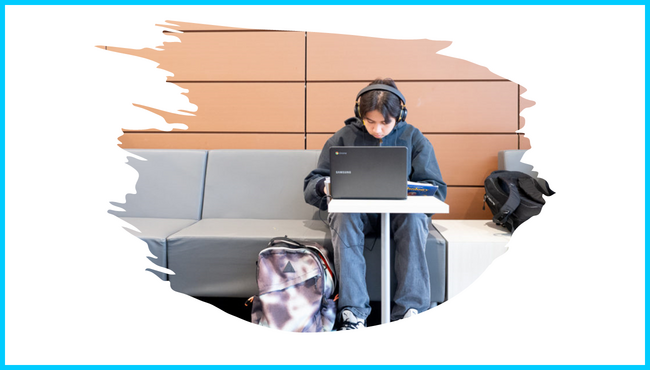5 Ways the Digital Divide Effects Education
The incorporation of information technology in learning has drastically transformed the society especially to those who can access the services. On the contrary, to the people who cannot access these services, they remain in the dark, and this has led to a new stratification in the society whereby, the haves get more vibrant with new ideas while the have-nots remain conservant to the old ideologies. The huge disparity in access to information and communication technology can be either geographical or socio-economical, and the education sector is adversely affected by this rift. Impacts of the digital divide are felt in all spheres of life, and we should question how does a digital divide pertain to education.
What is the digital divide in education?
The access to ICT in this age of technology is a broad topic that encompasses availability of hardware, software, accessory equipment, and networking as well as unlimited access to reliable information, especially in a formal schooling set-up. The inequality in access to technology is vividly eminent in every society, and some of the contributing factors to digital divide include, poverty and poor infrastructure, corruption, and bureaucracy as well as education and technical support among others. The education factor in digital divide is like the dilemma of egg and chicken: both are interrelated and knowing which one precipitate the other is difficult.
There were over 4.2 Billion internet users as at June 2018, while these figures may look impressive mammoth portion of the population is not well connected, and this may be detrimental considering the importance of ICT in education and general development of a country.
How does the digital divide affect education?
Over two decades ago when information technology was introduced in education, expectations were high, and the underprivileged lot in the society got optimistic. However, this has not happened, and the digital gap has widened quite fast, and impacts are now vivid.
1. Lack of exploitation of full potential hence low performance
Individuals hailing from low-income families are much limited to the access to information that is crucial in advancing their education and coming up with innovative ideas since they can’t afford connectivity to the web. As such, most students from underdeveloped countries will only do programs that are theoretical and don’t involve intensive researches. Limitation by the range of information available to such students is discouraging, and often they will either avoid pursuing involving courses, or if they register, the performance is poor.
2. Unfair competitive edge
Presently, many universities worldwide are embracing technology, and most activities including assignments and presentation of learning material are made available online. This gives superior students who can access the internet unfair competitive edge over their less privileged counterparts. The poor will remain void of crucial information presented online concerning academia, and thus they will always lag, and this may be summed up by poor performance. In cases where the gradation system is made online, those in the lower divisions will not be able to monitor their progress and strategize hence they often lack the motivation to continue.
3. Enhanced convenience in learning
Courtesy of integration of technology in education, you can now learn from the comfort of your living room on distance learning program. The elites are empowered because they have the machinery to support this kind of advancement while the poor are faced with many hurdles in their endeavors to achieve quality education, and they may have to travel to institutions miles away.
4. A difference in the learning experience
While the rich can easily access schooling materials online and work on their programs in a flash, the people in lower socio-economic classes are disadvantaged and have to undergo long hours of cumbersome studies in meeting the objectives of the course.
5. Decreased productivity among the poor
Most underdeveloped countries tend to major on the technical training or lest they produce half-baked graduates because of inadequate training due to limited research abilities as connectivity to the internet is limited besides having low cadre training equipment.
How did the digital divide affect education in the United States?
The United States being a superpower with a very impressive per capita income has a great obligation in ensuring equality in information technology access among its citizen and further influencing the global trends. Expectations are high; however, the real situation is different, and the US has for an extended period been caught in the digital divide.
In the US, digital divide did widen the gap between the rich and the poor regarding academic performance and later economically. The rich could access the latest technology and get access to the best available learning aids. As a result, they achieved excellence in education while the poor remained to stagnate glued to obsolete old ideas. Besides, students from the poor neighborhood could not gain admission in schools that were adamantly embracing ICT; thus they remained exclusively for the affluent in the society.
What are the implications of the digital divide in education?
Education should be liberating and is often seen as a standardizing factor in life. By acquiring knowledge, one gets capacitated to face life situations and provide solutions in promoting the development of a country. The massive digital divide in education means a great hindrance to the development of the underdeveloped world since they won’t be capable of inventing new technologies and conducting researches aimed at promoting the living standards of inhabitants. Furthermore, the digital divide in education encourages the dependence syndrome; one will subscribe to unproven ideologies since they lack a mechanism of creating or scrutinizing. Also, the developing countries seek more donations to bridge the digital divide.
How to fix the digital divide in education
Considering the vital role ICT plays in school, how to bridge the digital divide in education is a major nightmare for countries worldwide in ensuring effective equality in education. Commendable efforts to bridging the gap are now escalated world over, and it goes beyond the provision of devices. Some of the critical adjuncts in narrowing the digital divide include; promoting digital literacy through campaigns or incentives, partnerships with successful entities and robust networking. Bridging the digital gap in education is a gradual and costly process that is a prerequisite for development.
References
Steele, C. (2018). 5 Ways the digital divide effects education. Retrieved from 5 Ways the Digital Divide Effects Education | Digital Divide Council


.png)





























